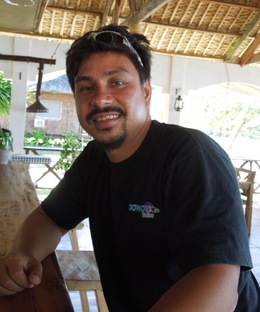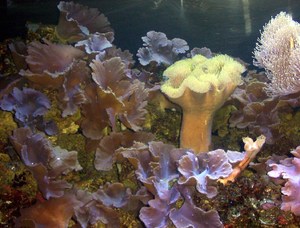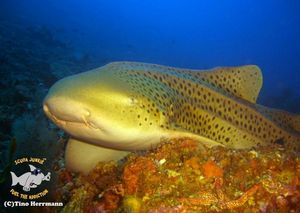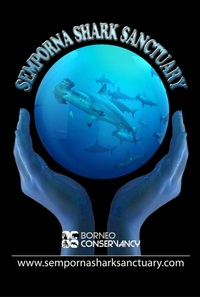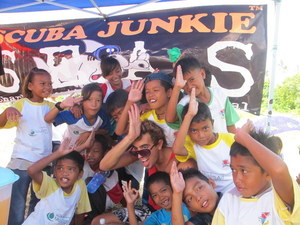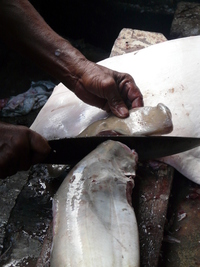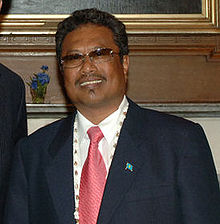Coral polyps reproduce in two ways: asexually (by the division of existing individual polyps) and asexually (by combining egg and sperm from two different polyps). “This results in a free-swimming polyp that will be carried by ocean currents to find a new colony and commence a new reef,” Bennet writes.
The coral reef is the world’s most diverse marine ecosystem, and one of its most productive. It is home to some 4,000 species of fish (approximately one-quarter of all marine fish species), along with a vast array of other life forms – molluscs, crustaceans, sea urchins, starfish, sponges, tube-worms and many more.
Most of these coral reefs are teeming in the waters of the Coral Triangle, which is recognized as the global center of marine biological diversity. The area within the ecological boundary of the Coral Triangle contains nearly 73,000 square kilometers of coral reefs – that’s 29 percent of the global total – and spans parts of six countries: Indonesia, Malaysia, Papua New Guinea, the Philippines, Solomon Islands, and Timor-Leste.
“There are perhaps one million species in a habitat that covers a total of about 250,000 square kilometers (roughly the area of the United Kingdom),” reports Reefs at Risk Revisited in the Coral Triangle, a publication published by the Washington-based World Resources Institute (WRI).
Dynamic and highly productive, coral reefs are not only a critical habitat for numerous species, but also provide essential ecosystem services upon which millions of people depend. More than 275 million people globally live very close to reefs.
In the Philippines, for instance, more than 40 million people live on the coast within 30 kilometers of coral reef, which represents about 45 percent of the country’s population. Approximately, two million people depend on fisheries for employment, with about one million small-scale fishermen directly dependent on reef fisheries. The country’s reefs yield 5 to 37 tons of fish per square kilometer, making them very important to the productivity of fisheries.
“The Philippines is a major supplier of fish to the live reef food fish trade, a billion dollar industry in the Asia-Pacific region,” the WRI report said. “In 2007, the Philippines exported at least 1,370 tons of coral trout (Plectropomus leopardus), one of the trade’s most important species in terms of volume, which fetched an estimated retail value of about US$140 million.”
Coral reefs, like mangroves, play a major role in protecting tropical shorelines from the erosive powers of storms and wave action. Under normal conditions, they act as self-repairing, natural breakwaters, which is particularly vital on coastlines that are subject to cyclones and hurricanes.
In terms of net economic benefits of shoreline protection from reefs, Philippines leads with US$400 million while Indonesia came second with US$387 million. “These values are likely much higher today due to increased development, and hence increased numbers of coastal properties at risk,” the WRI report said.
The prospect of finding a new drug in the sea, especially among coral reef species, may be 300 to 400 times more likely than isolating one from a terrestrial ecosystem. “Marine sources could be the major source of drugs for the next decade,” says Dr. William Fenical, a natural products chemist at the Scripps Institution of Oceanography in La Jolla, California.
The WRI report agreed. “Many reef-dwelling species have developed complex chemical compounds, such as venoms and chemical defenses, to aid their survival in these highly competitive habitats,” it explained. “Many such compounds have the potential to form the basis of life-saving pharmaceuticals.”
To date, explorations into the medical application of reef-related compounds include treatments for cancer, HIV, malaria, and other diseases. “Since only a small portion of reef life has been sampled, there is still vast potential for new pharmaceutically valuable discoveries.”
But the future for coral reefs is grim. Rising levels of carbon dioxide and other greenhouse gases in the atmosphere will further threaten reefs, as warming prompts coral bleaching and more acidic water slows coral growth.
The WRI report said that by 2030, almost all reefs in the region are projected to be threatened, with 80 percent in the high, very high, or critical categories. By 2050, all reefs in the region are projected to be threatened, with more than 90 percent in the high, very high, or critical categories.
“It is rare for any reef to suffer only a single threat,” the WRI report said. “More often the threats are compounded. For instance, overfishing eliminates key herbivores that graze on algae, while runoff from agriculture supplies nutrients that cause algal blooms; together, these impacts reduce the abundance or impair the growth of coral. A reef left vulnerable by one threat can be pushed to ecological collapse by the addition of a second.”



